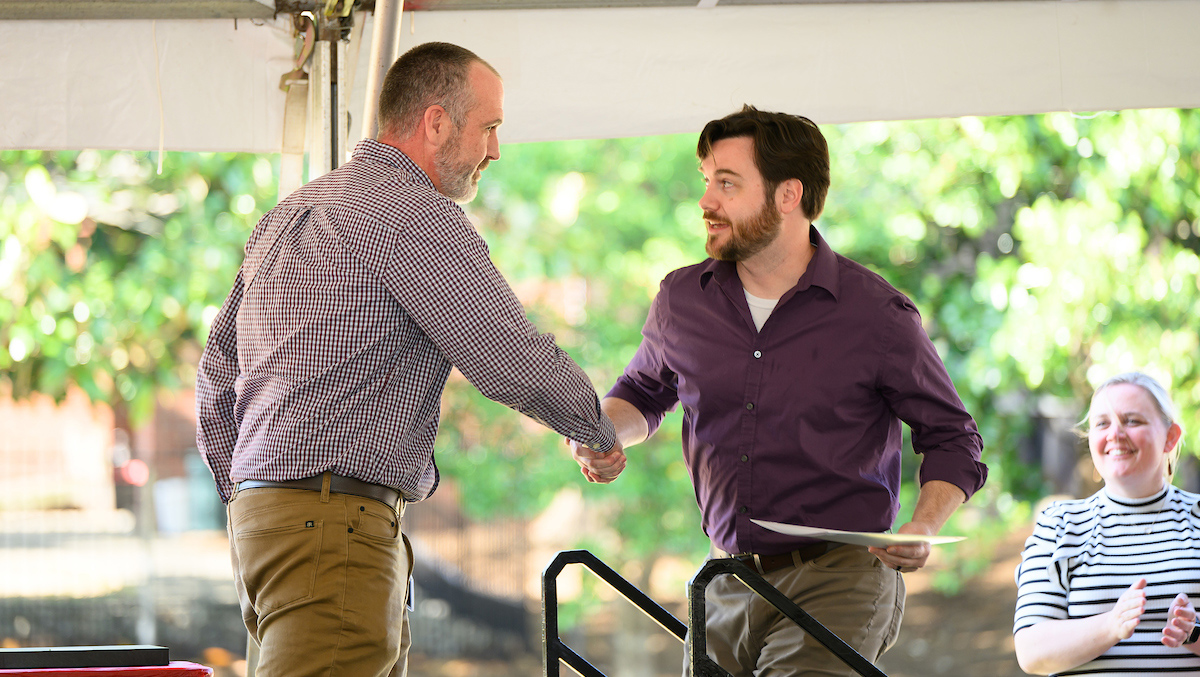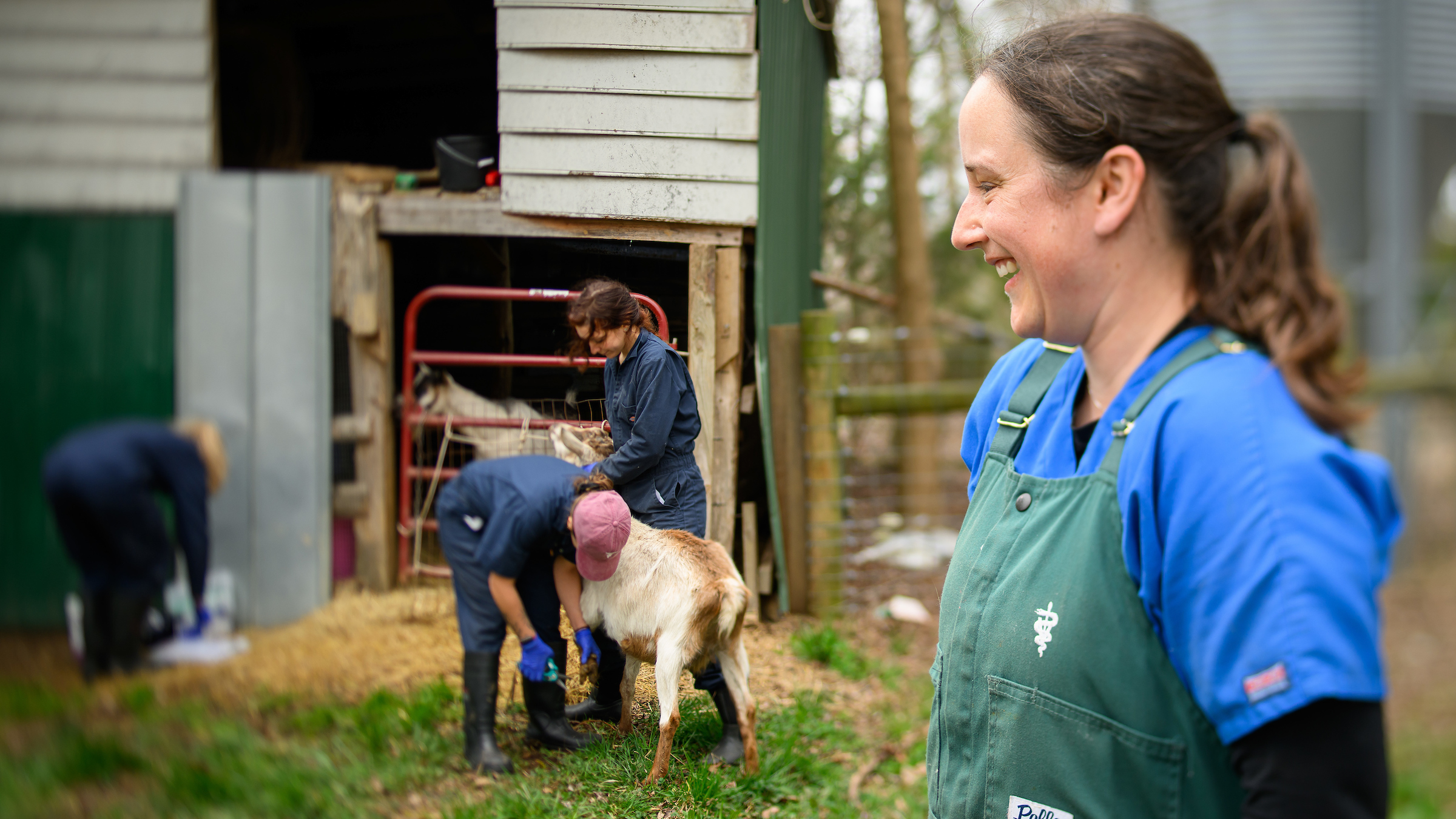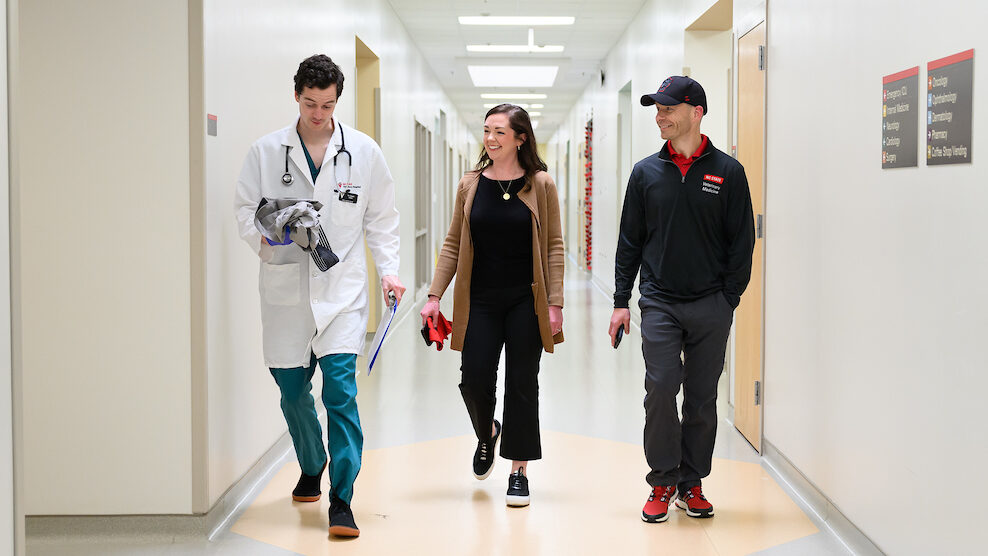‘My Prayers Answered’: Hearing Restoration Leads to Coat of Excellence
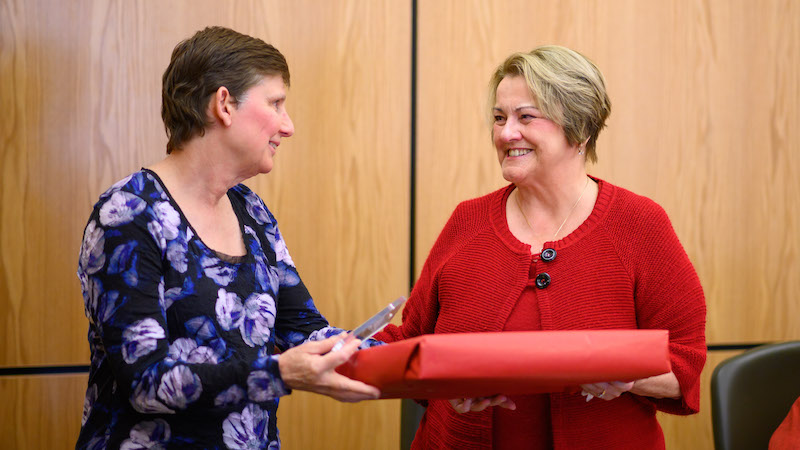
Cyndie Tomlin wasn’t sure if her 9-year-old cocker spaniel, Hunter, would ever hear again. Then, one day, Hunter looked up and barked.
Hunter had not been reacting to noises like he had before; he wouldn’t look at something loud or bark at it. Tomlin was referred to the NC State Veterinary Hospital to figure out what was going on and what, if anything could be done.

After examination by the hospital’s soft tissue surgeons, Hunter was seen by Marcy Murphy, assistant clinical professor of dermatology. His ear canals were painful, badly swollen with a yellow-brown liquid. It was Murphy who found the hearing loss was caused by allergies and treatable without surgery. It would take a combination of medication and modifications to diet and hygiene.
Not long after, when Tomlin took Hunter for a walk, some noisy crows flew overhead. Hunter barked at them.
“It was my prayers answered,” says Tomlin. “Then I knew I had my best friend back.”
On Valentine’s Day, Tomlin showed her love and appreciation by presenting a Coat of Excellence to Murphy, bearing both Murphy’s name and Hunter’s. The Coat of Excellence program makes it possible for pet owners to honor a special faculty clinician, intern, resident or staff member who has touched their lives in a meaningful way.
With a tax-deductible donation, the special person will receive a white coat embroidered with the name of the recipient and the pet’s name, too. The donation supports the hospital’s efforts to provide the same standard of compassionate care to other animals and their human companions.
“My token to you is insignificant compared to what you did for Hunter,” Tomlin said to Murphy during the ceremony.
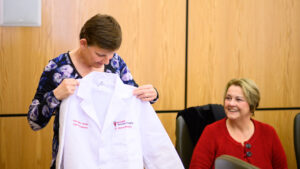
With Murphy’s guidance, Tomlin committed to daily ear cleanings, weekly baths and strict adherence to dietary restrictions, including a special anallergenic dog food, a special formulation for dogs with extreme allergies made from processed sources of protein combined with selected and purified sources of carbohydrate.
The protein in Hunter’s food is actually derived from feathers. Hunter and Tomlin will continue to return to the veterinary hospital when they are able to now pinpoint the causes of his food allergy.
But the hardest part of the journey is over now. At 9 years old, Hunter is still “alert, funny and fun,” says Tomlin. And she is beyond grateful for that.
“I truly think this a miracle,” she says.
~Steve Volstad/NC State Veterinary Medicine
- Categories:
